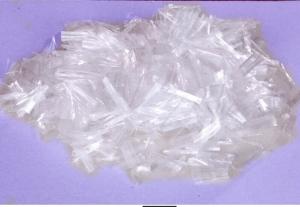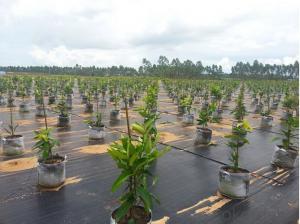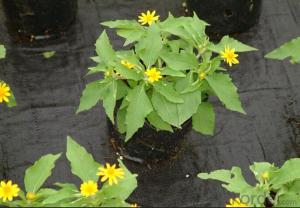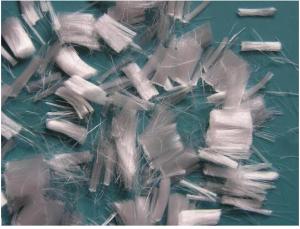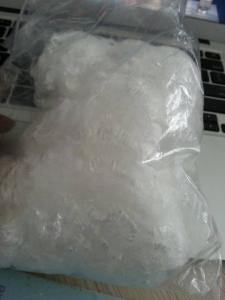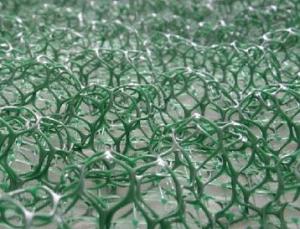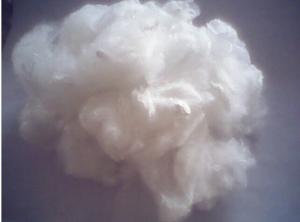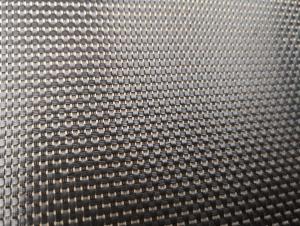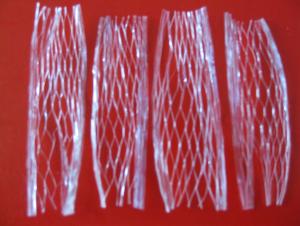Polypropylene Mesh Fiber for Concrete Use
- Loading Port:
- China main port
- Payment Terms:
- TT OR LC
- Min Order Qty:
- 2000 kg
- Supply Capability:
- 100000 kg/month
OKorder Service Pledge
OKorder Financial Service
You Might Also Like
1. Introduction of Polypropylene Mesh Fiber for Concrete Use
Polypropylene mesh fiber, also called mesh type polypropylene fiber and PP fibermesh. With polypropylene as its raw material, PP fiber mesh is produced by a specialtechnology. It looks like a net-like structure with many PP monofilament. cross linked with each other.
As a new type of concrete reinforcement fiber, it is a new hot spot in application field of concrete fiber after steel fiber, polypropylene monofilament fiber.
2. Product Specification of Polypropylene Mesh Fiber for Concrete Use
Raw material | polypropylene |
Type | Mesh |
Fiber dia | 0.1mm |
Length | 15,19, 38mm |
Crack Elongation | ≥15% |
Density | 0.91g/cm³ |
Melting point | 160-170°C |
Tensile Strength | ≥550Mpa |
Elastic Modulus | >3300Mpa |
Resistance to Acid, Alkali | Strong |
Water Absorbency | No |
3. Product Features of Polypropylene Mesh Fiber for Concrete Use
Polypropylene fiber mesh, as the filling material of concrete, has the properties of good dispersibility, resistance to acid and alkali. The main functions are:
1). Increase the crack resistance of concrete;
2). Increase the seepage retansisce of concrete;
3). Increase the freezing & thawing resistance of concrete;
4). Increase the impact resistance of concrete;
5). Increase the durability resistance of concrete;
6). Increase the fire resistance of concrete;
7). Increase the tensile strength and bending strength of concrete;
8). Increase the plastic deformation ability of concrete.
4. Application of Polypropylene Mesh Fiber for Concrete Use
1). The surface of road, bridge, runway and floor of the factory.
2). Wall and roof of the tunnel and mine.
3). Dam, river, bridge pier, dock and military protection facilities.
5.FAQ
1. Which payment do you accept?
For you convinience,our payment can be L/C,TT
2. Is free sample available?
We can supply free samples if you need.
3. How about your quality?
We have strict quality control system, we make testing on incoming raw material and finished products. Your third party testing is also welcomed. With high quality, our products are used on government projects at home and abroad. Our product quality is accepted by clients from all over the world
6. Product Photos of Polypropylene Mesh Fiber for Concrete Use
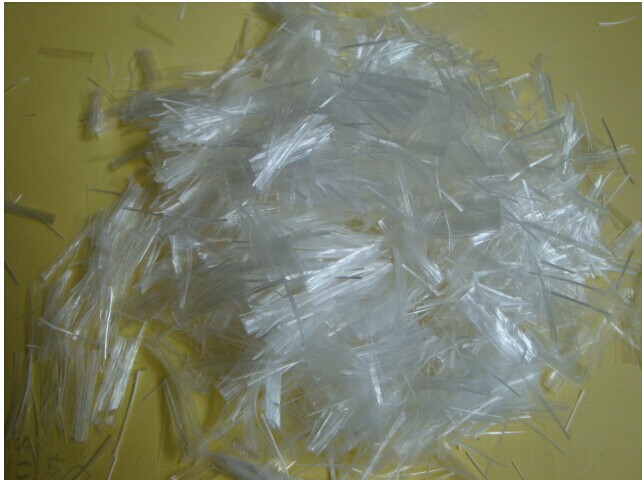

- Q:What is the purpose of using geotextile mats in road construction?
- The purpose of using geotextile mats in road construction is to enhance the performance and longevity of roads by providing erosion control, soil stabilization, and drainage capabilities. These mats act as a barrier between the subgrade and the road base, preventing the mixing of materials, reducing the impact of water on the road structure, and improving overall road strength and stability.
- Q:How do geosynthetic clay liners work in landfill projects?
- Geosynthetic clay liners (GCLs) are used in landfill projects as a barrier system to contain and prevent the migration of hazardous waste and leachate. GCLs consist of a layer of bentonite clay sandwiched between two geotextiles. The clay acts as a low-permeability material, absorbing and swelling in the presence of water, thereby creating a barrier that restricts the movement of fluids. The geotextiles provide reinforcement and protection to the clay layer. Overall, GCLs work by effectively sealing the landfill cells, reducing the potential for contamination and protecting the surrounding environment.
- Q:What are the different shapes and designs available for earthwork products?
- There is a wide range of shapes and designs available for earthwork products, including but not limited to retaining walls, embankments, slopes, trenches, ditches, berms, and terraces. These can be customized to meet specific project requirements, and materials such as concrete, stone, or reinforced soil can be used to create various aesthetic and functional designs. Additionally, earthwork products can be engineered to withstand different soil conditions, water pressures, and load capacities, ensuring their stability and longevity.
- Q:How do earthwork products contribute to slope stabilization and erosion control on highways?
- Earthwork products such as geotextiles, geogrids, and erosion control blankets are used in slope stabilization and erosion control on highways. Geotextiles, for example, function as filters and separators, preventing soil particles from migrating while allowing water to pass through. Geogrids reinforce soil and improve its stability, especially in steep slopes. Erosion control blankets provide temporary protection by reducing water velocity, promoting vegetation growth, and preventing soil erosion. Ultimately, these earthwork products play a crucial role in preventing slope failure, reducing erosion, and ensuring the long-term stability of highways.
- Q:Are earthwork products available in various colors and finishes?
- Yes, earthwork products are available in various colors and finishes.
- Q:Can earthwork products be used in agricultural projects?
- Yes, earthwork products can be used in agricultural projects. These products, such as soil, gravel, and clay, can be utilized in various ways in agriculture, including land leveling, irrigation system construction, and erosion control. They can help improve soil quality, enhance water management, and prevent soil erosion, contributing to better crop growth and productivity in agricultural projects.
- Q:How do earthwork products contribute to dust control on construction sites?
- Earthwork products such as geotextiles and erosion control blankets play a crucial role in dust control on construction sites. These materials help to stabilize the soil, prevent erosion, and reduce the amount of loose particles that can become airborne. By providing a protective layer over the soil, earthwork products minimize dust generation, resulting in improved air quality and a safer working environment for construction workers and neighboring communities.
- Q:What are the different installation methods for earthwork products?
- There are several different installation methods for earthwork products, including excavation and backfill, compaction, grading, and erosion control. Excavation and backfill involves digging out the desired area to the required depth and then filling it back in with soil or other materials. Compaction is the process of using heavy machinery to compress and stabilize the soil, ensuring a solid foundation. Grading involves leveling the surface of the land, while erosion control methods such as the use of geotextiles or retaining walls help prevent erosion and provide additional stability to the earthwork products.
- Q:Can earthwork products be used for embankment stabilization?
- Yes, earthwork products can be used for embankment stabilization. Earthwork products, such as geotextiles, geomats, and geogrids, are commonly used in civil engineering projects to reinforce and stabilize embankments. These products help to prevent erosion, improve soil stability, and increase the overall strength and durability of the embankment.
- Q:How do earthwork products contribute to land remediation and restoration?
- Earthwork products, such as soil, sand, and gravel, play a crucial role in land remediation and restoration. These products are used to fill and level contaminated or damaged land, creating a stable foundation for further remediation efforts. Additionally, earthwork products can be used to create berms, barriers, or containment structures that prevent the spread of pollutants and protect sensitive ecosystems. By providing the necessary materials for land regrading, erosion control, and vegetation establishment, earthwork products facilitate the rehabilitation of degraded land, ultimately restoring its functionality and ecological value.
1. Manufacturer Overview |
|
|---|---|
| Location | |
| Year Established | |
| Annual Output Value | |
| Main Markets | |
| Company Certifications | |
2. Manufacturer Certificates |
|
|---|---|
| a) Certification Name | |
| Range | |
| Reference | |
| Validity Period | |
3. Manufacturer Capability |
|
|---|---|
| a)Trade Capacity | |
| Nearest Port | |
| Export Percentage | |
| No.of Employees in Trade Department | |
| Language Spoken: | |
| b)Factory Information | |
| Factory Size: | |
| No. of Production Lines | |
| Contract Manufacturing | |
| Product Price Range | |
Send your message to us
Polypropylene Mesh Fiber for Concrete Use
- Loading Port:
- China main port
- Payment Terms:
- TT OR LC
- Min Order Qty:
- 2000 kg
- Supply Capability:
- 100000 kg/month
OKorder Service Pledge
OKorder Financial Service
Similar products
New products
Hot products
Related keywords

